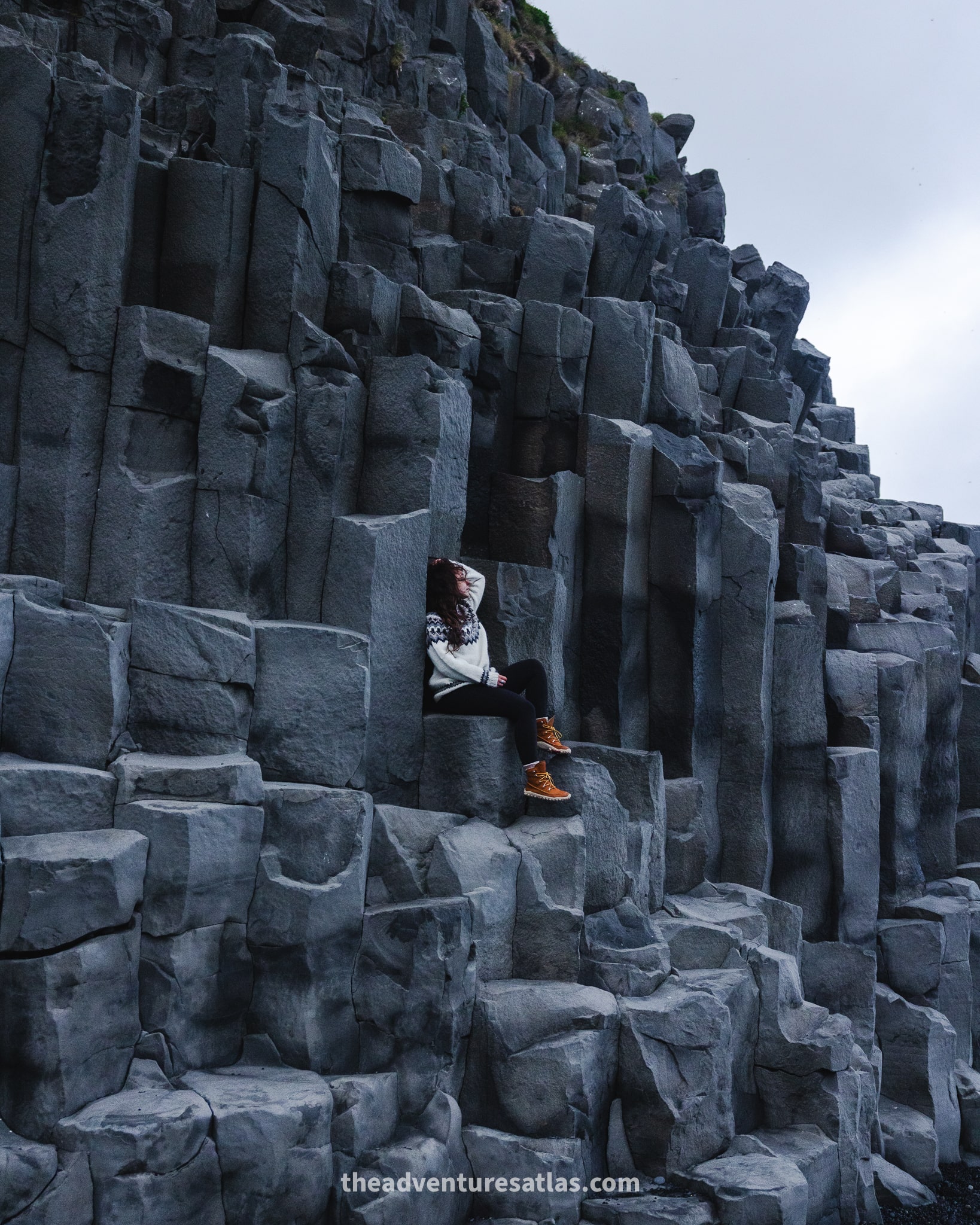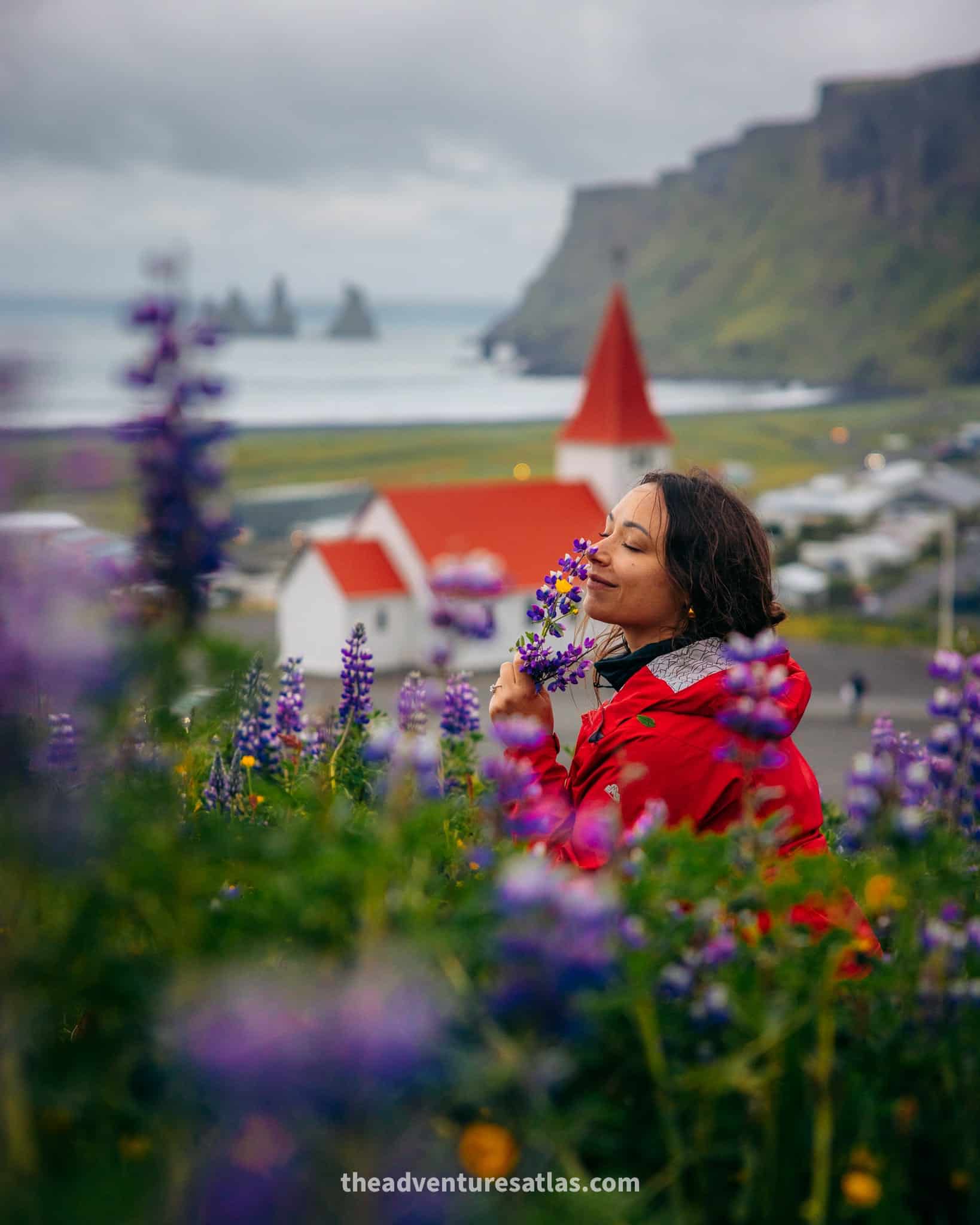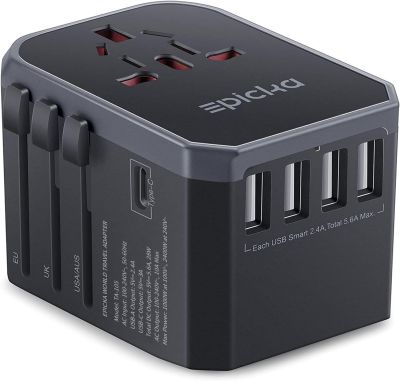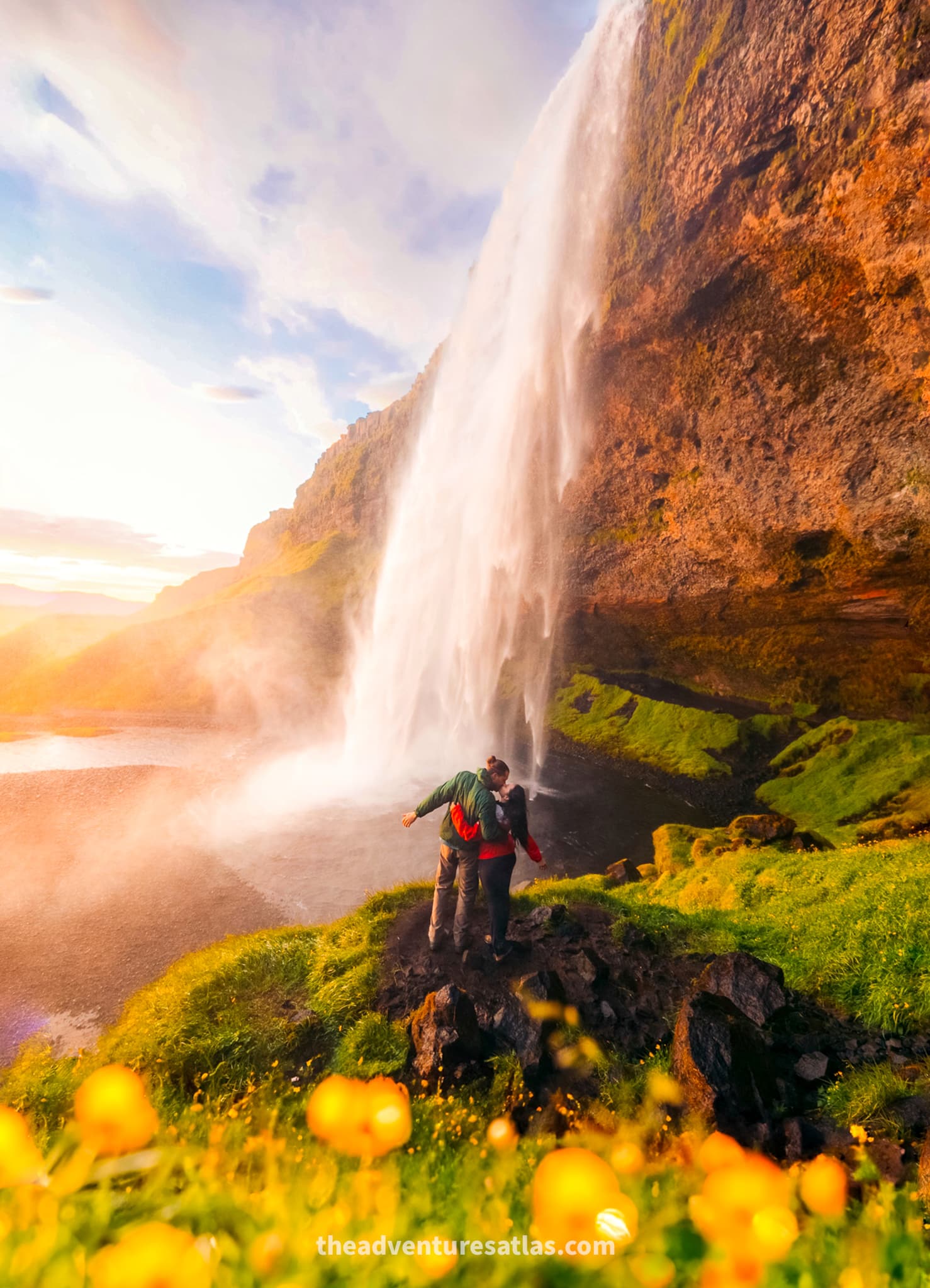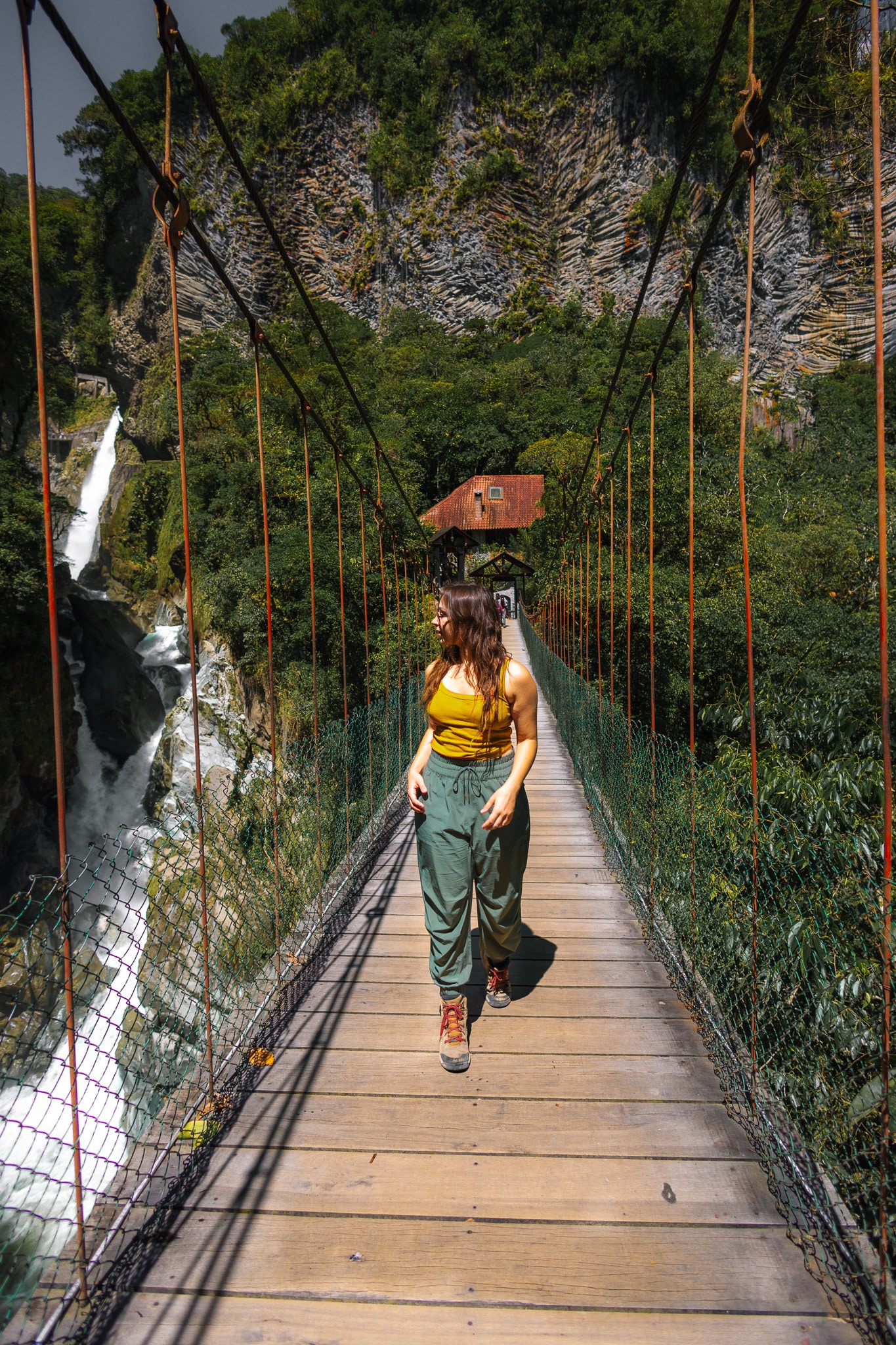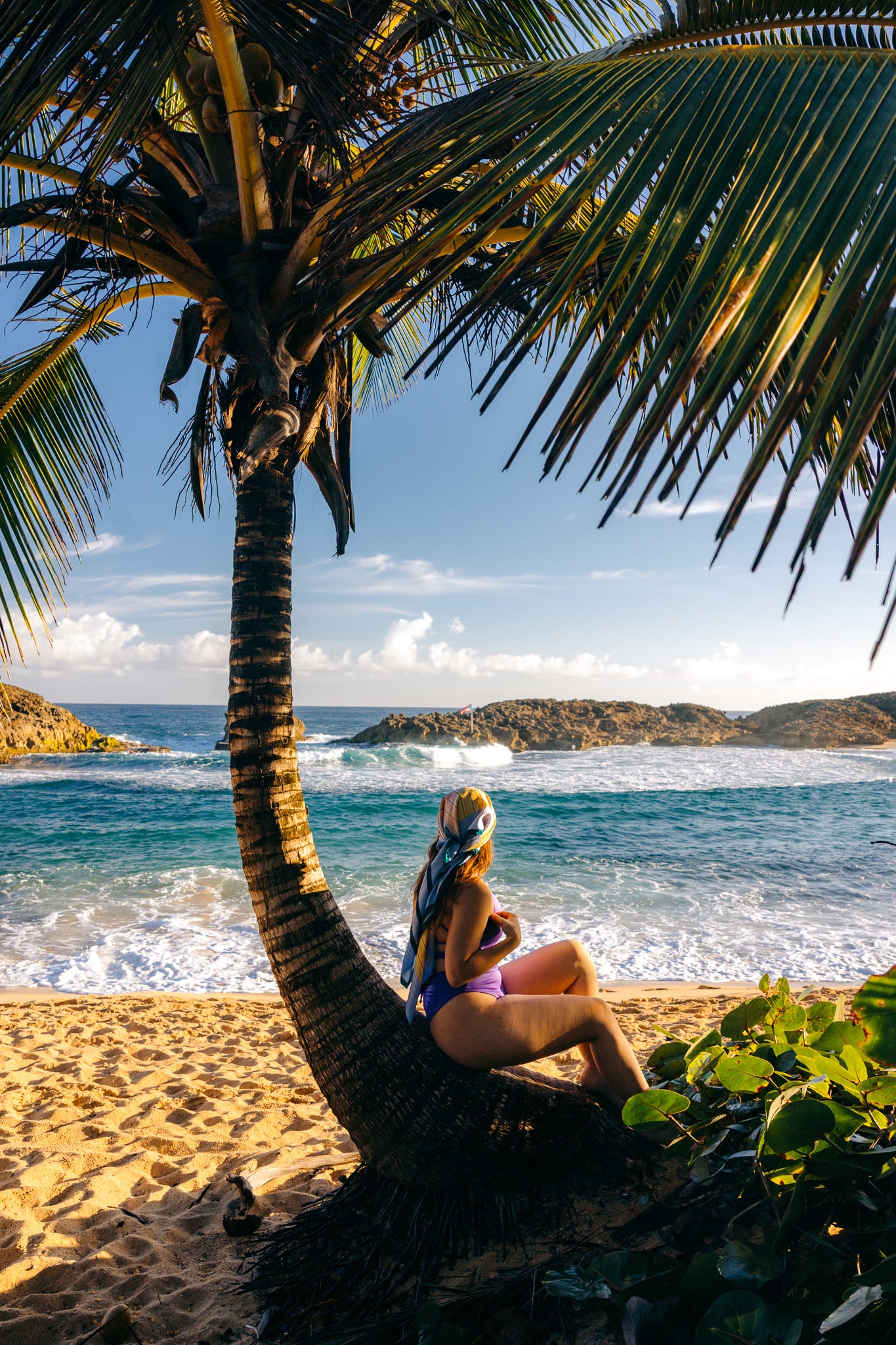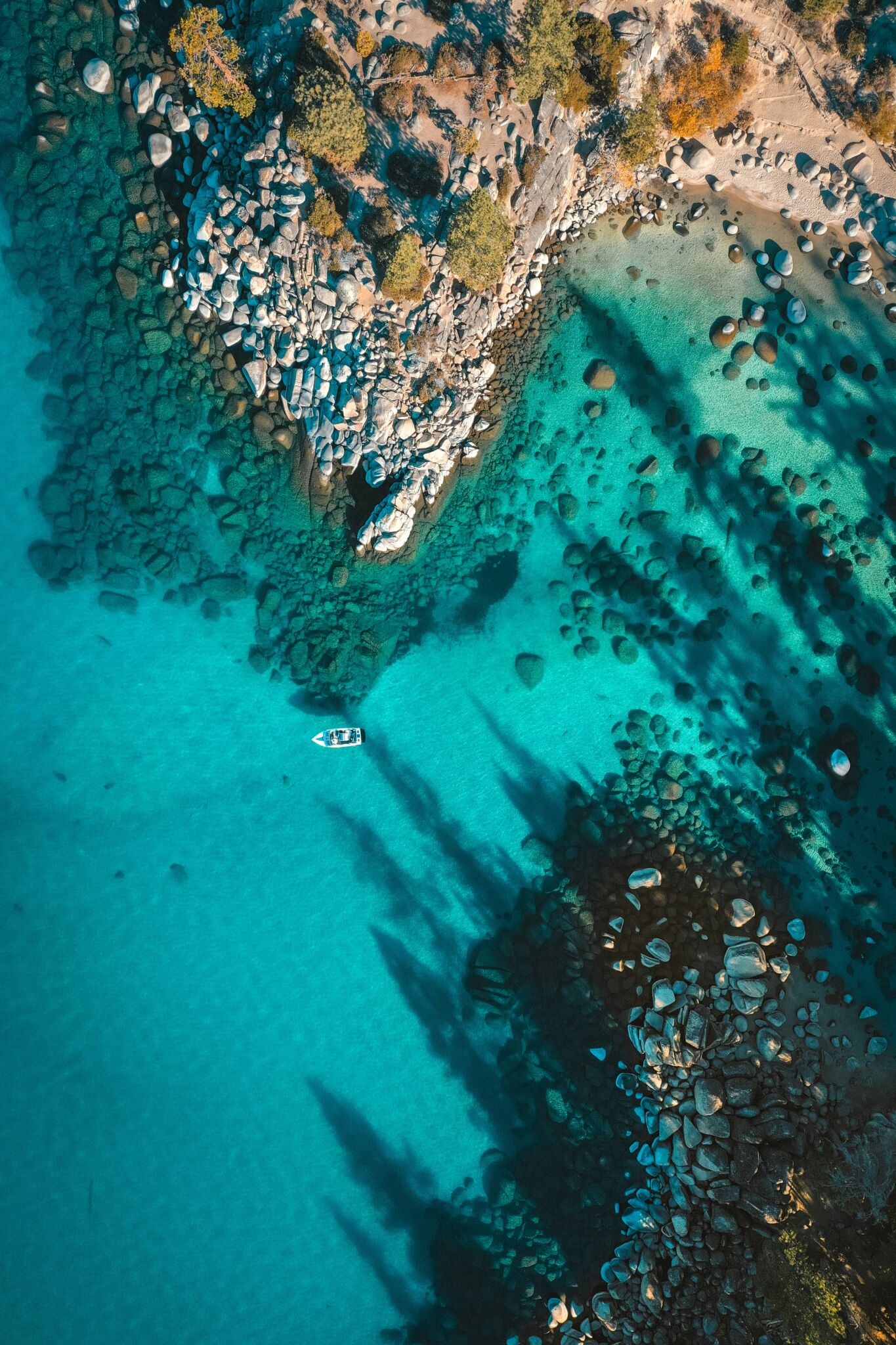Complete Iceland Summer Packing List (+ Free Packing List Download)
Post summary: Exactly what to pack for summer in Iceland (June, July, August, September) + a free packing list download
Planning a trip to Iceland this summer? Before you start imagining yourself surrounded by geysers, lava fields, and black-sand beaches, let’s sort out your suitcase.
Which brings us to this guide on what to pack for Iceland in summer.
I’ve been to Iceland 6 times, and in my experience, the Land of Fire and Ice is a bit tricky to pack for. Summer there is cool and mild, but you still need to pack like you’re visiting a winter destination since the weather fluctuates so much.
Getting specific about what to take with you is a must. But don’t worry, I’ve got you covered (just like I have with this first-timer’s guide to Iceland).
Let’s dive in!
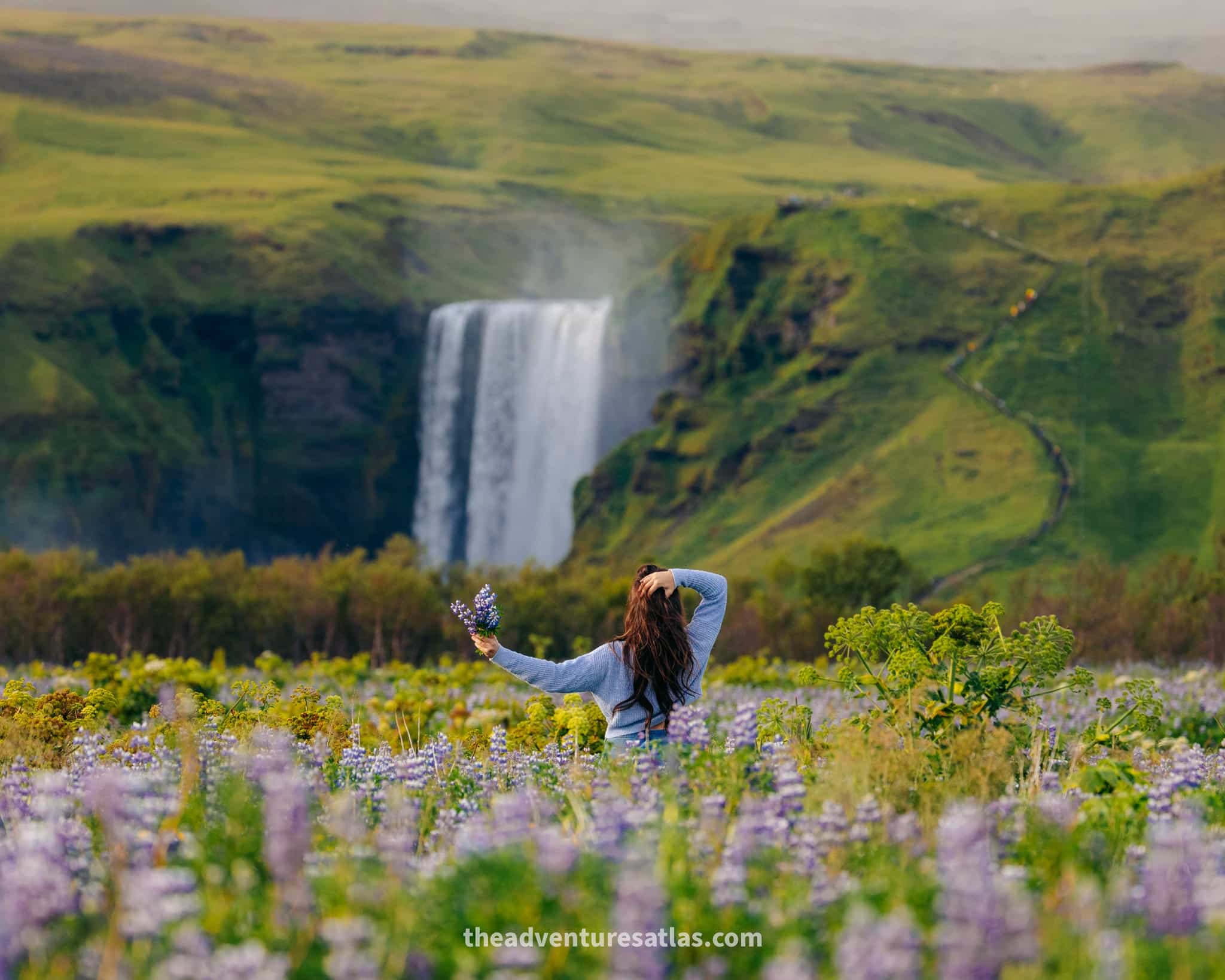
Posts to help you plan your summer trip to Iceland
The Best of Icelands South Coast: a 4-day Road Trip Itinerary
How to Use Google Maps to Plan Your Next Road Trip (Step-By-Step Tutorial With Examples)
15 Useful Apps to Download Before Your Next Road Trip (for Free!)
What to Pack for Summer in Iceland (June, July, August, September)
Okay, let’s break down everything you need to pack to keep warm, dry, and ready for your adventure.
.
Iceland Summer Clothing Essentials: Your Complete Layer-by-Layer Guide
The key to Iceland packing success? Layers, layers, and more layers. You need to be able to add or remove clothing as conditions change throughout the day, sometimes multiple times.
Let’s walk through exactly what to pack, starting from your base layers and working outward. This system has kept me comfortable through everything from glacier hikes to hot spring soaks at all times of the year, no matter what the weather decides it wants to do.
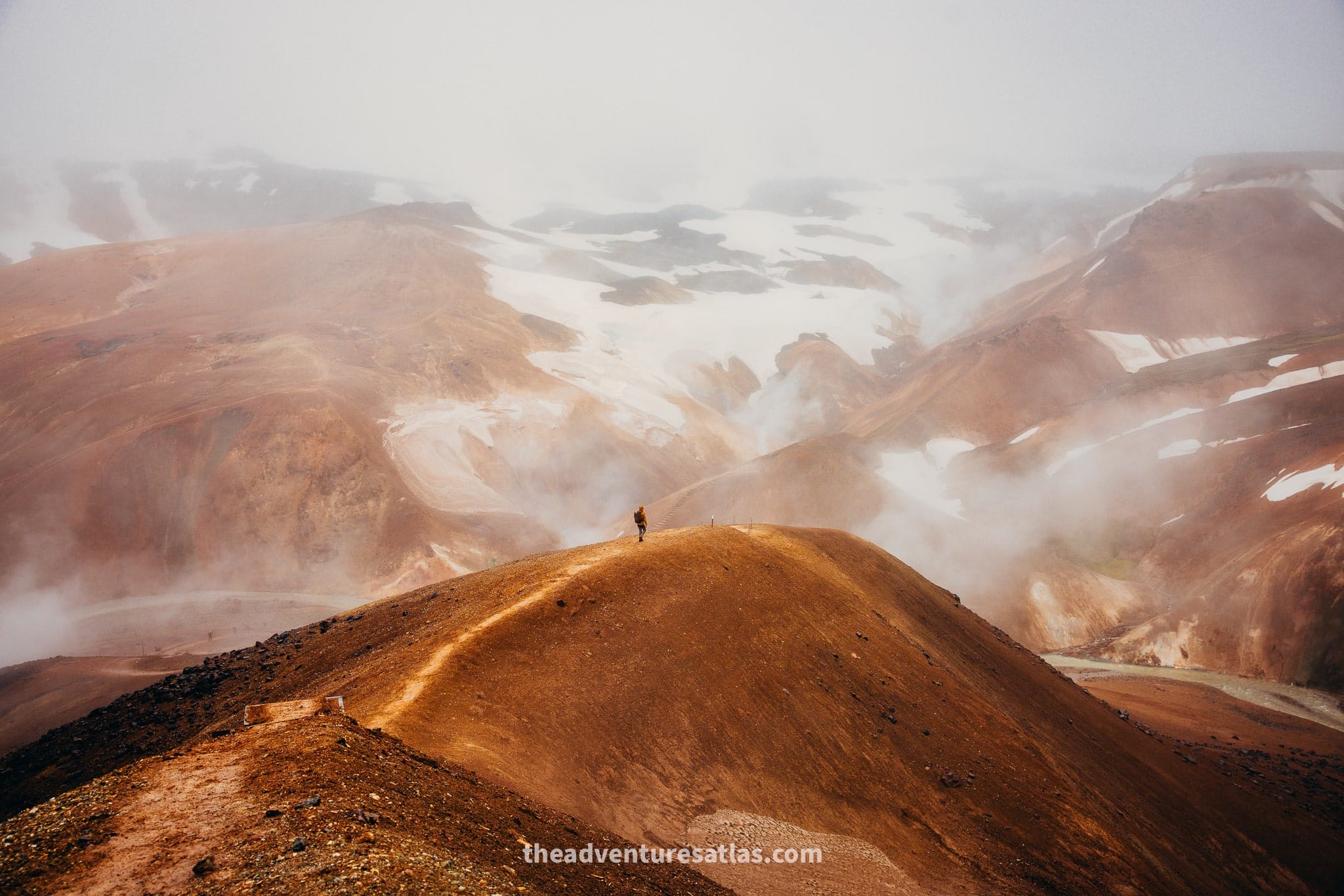
1. Base Layers: Your Foundation for All-Day Comfort
Long sleeve shirts and lightweight tops are absolutely your best friends in Iceland. But this is where most people make their first mistake: they pack cotton. Don’t do it! Cotton is your enemy in Iceland’s damp climate.
Here’s what to pack instead:
- Merino wool base layers – These are game-changers. They’re naturally odor resistant (you can wear them multiple days), regulate temperature, and will keep you warm (even when wet). I pack at least 3 merino wool long-sleeve shirts for a 1 week trip.
- Synthetic moisture-wicking shirts – These are perfect for more active days when you’ll be sweating during hikes. They dry incredibly fast and are usually more affordable than merino wool.
- Lightweight short sleeve options – Pack 2-3 for layering or for those rare warm afternoons when the sun decides to come out.
Pro tip from experience: Pack one extra base layer beyond what you think you need. You’ll be wearing these daily and you’ll be glad to have a back up while one is drying or if you get completely soaked.
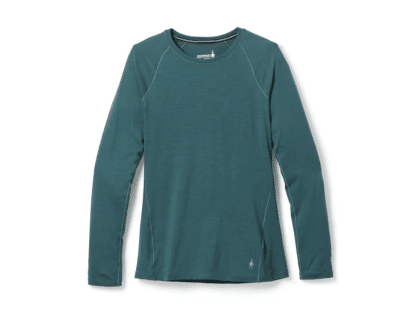
2. Mid-Layers: Your Warmth Insurance Policy
This is your insulation layer, and it’s crucial for staying warm when temperatures drop or the wind picks up. You want something that traps warm air while still allowing you to move freely during hikes and outdoor activities.
Best options for Iceland:
- Fleece jackets – Lightweight, warm, and they dry quickly if they get wet. I love a good zip-up fleece because you can easily adjust your temperature by zipping or unzipping.
- Lightweight wool sweaters – These look great for dinner in Reykjavik and provide excellent warmth. Plus, you might want to buy an authentic Icelandic lopapeysa (wool sweater) while you’re there! My favorite place to get genuine handmade sweaters is at the Woolmarket in Hella.
- Lightweight down jacket – Perfect for chilly evenings or early morning adventures. Look for one that packs down small so you can stuff it in your daypack.
Pack at least one quality mid-layer, but I recommend two different options – maybe a fleece for active days and a fun sweater for when you’re not moving as much but still want to take fun photos.
3. Outer Layers for Weather Protection
This is where you absolutely cannot compromise. A high-quality waterproof rain jacket is not just recommended for Iceland – its ESSENTIAL.
Your rain jacket should have:
- GORE-TEX or similar waterproof/breathable fabric – You want something that keeps water out but lets sweat escape. Make sure it’s waterPROOF, NOT water resistant.
- Fully sealed seams – This is crucial; if the seams aren’t sealed, you’ll get wet.
- A hood that fits over a warm hat – Iceland’s wind and rain often come together
- Underarm zips for ventilation – Essential when you’re hiking uphill and generating heat
- Pockets that are accessible when wearing a backpack – Trust me on this one…
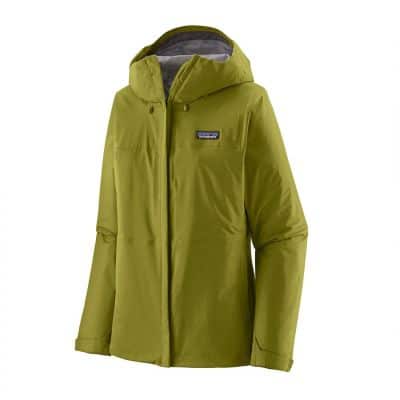
Waterproof rain pants are equally important. You might think you can skip these, but you’ll regret it the first time you’re standing next to Skógafoss or Seljalandsfoss getting absolutely drenched by waterfall spray, or when you’re caught in a sudden downpour miles from shelter.
Look for rain pants that:
- Have full-length side zips so you can put them on over boots
- Are breathable (not just waterproof)
- Have reinforced knees and seat for durability
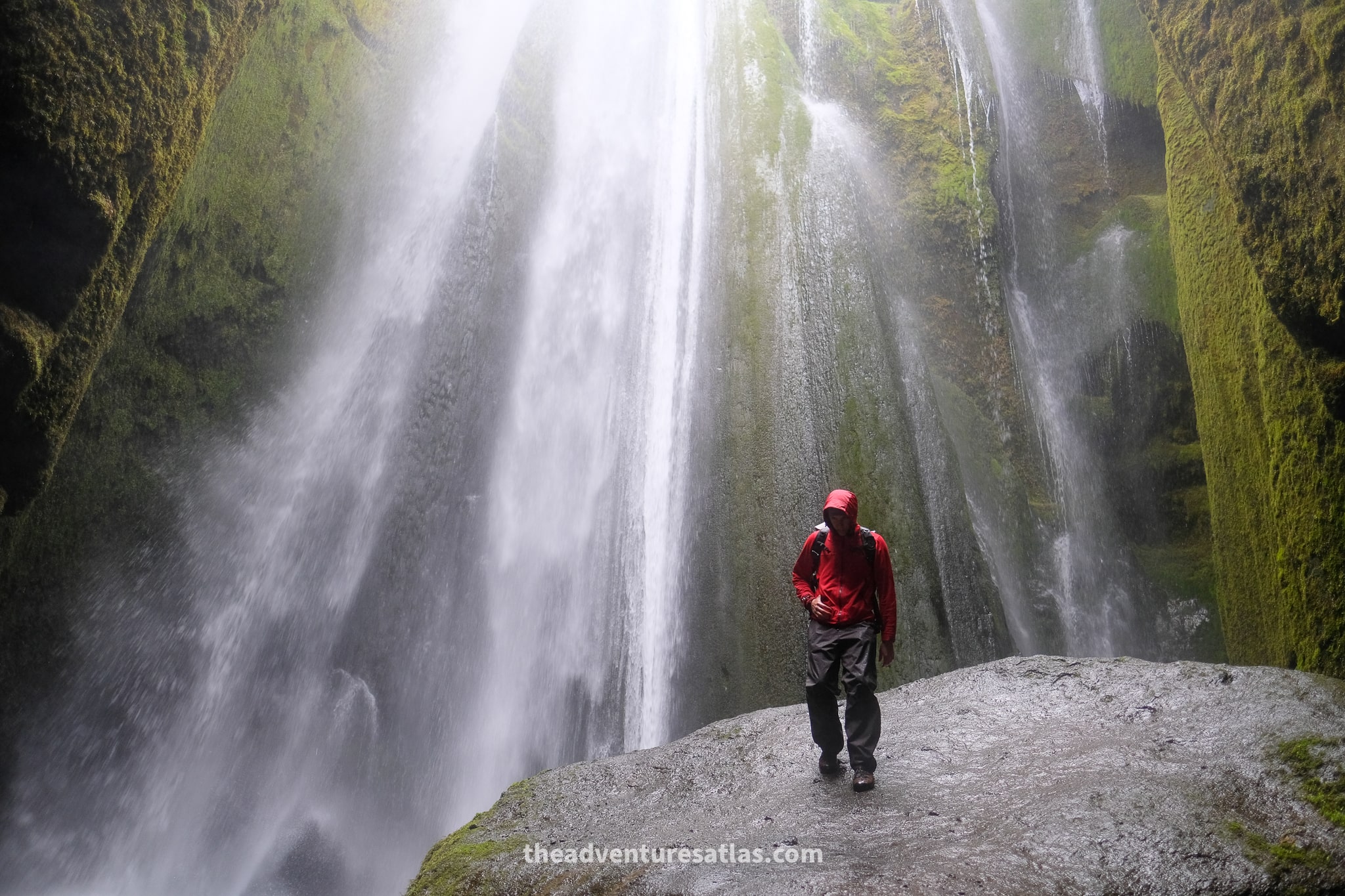
4. A Swimsuit
This might seem crazy given all the talk about staying warm, but a swimsuit is absolutely essential for Iceland.
Iceland has legendary geothermal hot springs and you definitely don’t want to miss out on soaking in the Blue Lagoon, Sky Lagoon, or one of the many incredible natural hot springs scattered across the country.
Pack a swimsuit and consider bringing:
- A quick dry cover-up or sarong
- Flip flops specifically for hot spring facilities
- A quick dry travel towel (though most facilities provide them)
Pro tip: Many hot springs have specific etiquette rules, including mandatory nude showering before entering the pools. Don’t let this catch you off guard!
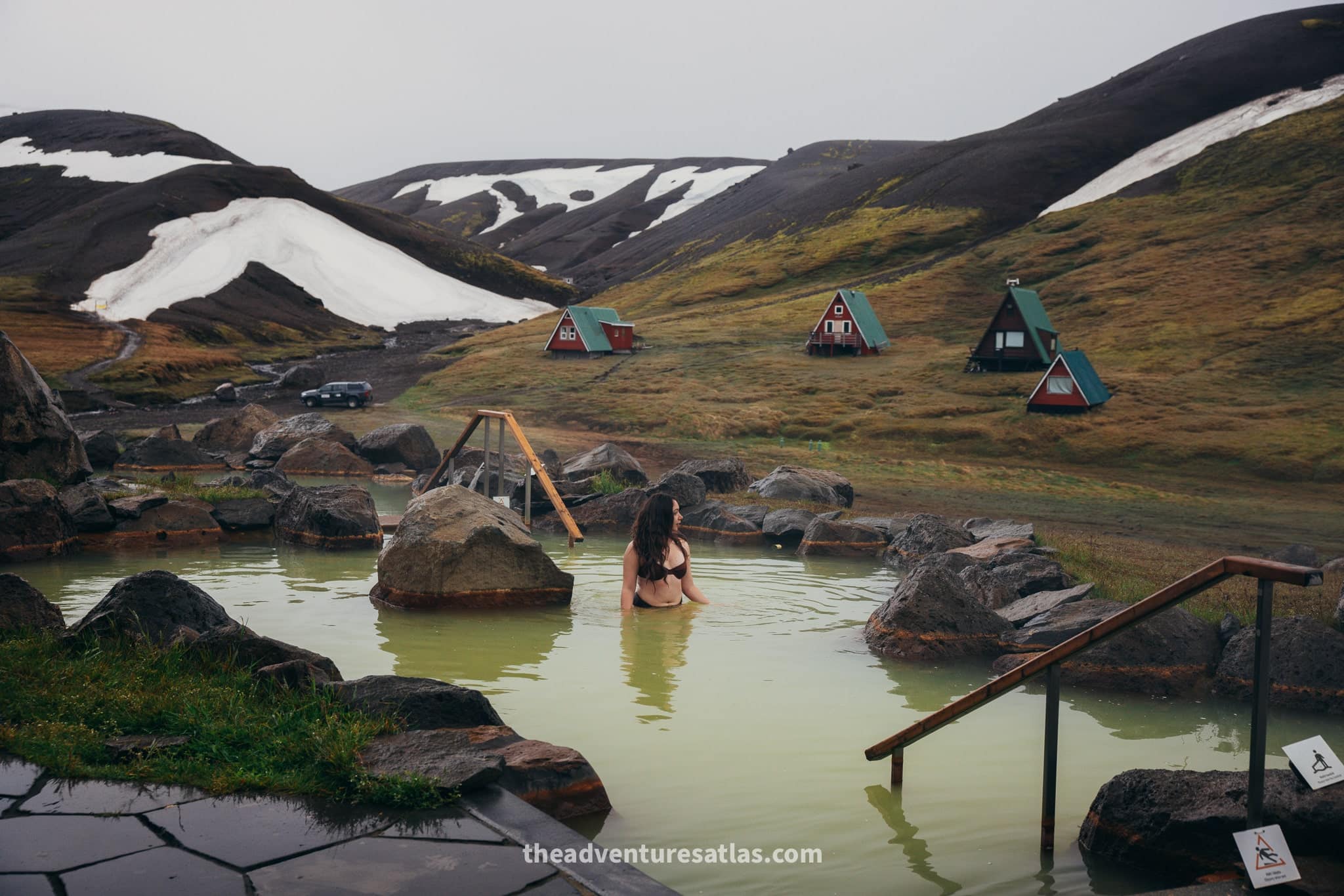 My favorite suits are from Londre Bodywear! JACKIE15 saves you 15% at check out :)
My favorite suits are from Londre Bodywear! JACKIE15 saves you 15% at check out :)
Iceland Summer Footwear: Keeping Your Feet Happy, Dry, and Comfy
Your feet are about to carry you through some of the most incredible landscapes on earth, so investing in proper footwear is crucial. Iceland’s terrain includes everything from smooth city sidewalks to rough volcanic rock, muddy trails and wet grass.
5. Waterproof Hiking Boots: Non-Negotiable!
Comfy, waterproof hiking boots are absolutely essential and probably the most important single item you’ll pack. You’ll be walking on wet, uneven terrain, sharp volcanic rock, and potentially muddy trails daily.
Your hiking boots should be:
- Completely waterproof (not just water-resistant) – Literally cannot stress this enough
- Broken in before your trip – New boots and long hiking days are a recipe for painful blisters (I’m speaking from experience…)
- Sturdy with good ankle support – Iceland’s terrain is uneven and can be challenging
- Have aggressive tread – You’ll hike over wet rocks, moss and potentially muddy conditions
My personal recommendation: I’ve hiked all over Iceland in my trusty waterproof hiking boots, and they’ve never let me down. Invest in quality here! Your feet will thank you.
6. Comfortable Walking Shoes for Town
You’ll want something comfortable for exploring Reykjavik and other towns when you’re not hiking. These don’t need to be as rugged as your hiking boots, but they should still be comfortable for lots of walking.
Good options include:
- Comfortable sneakers or walking shoes
- Casual boots that look good with your non-hiking clothes
- Something you can easily slip on and off (helpful for some accommodations)
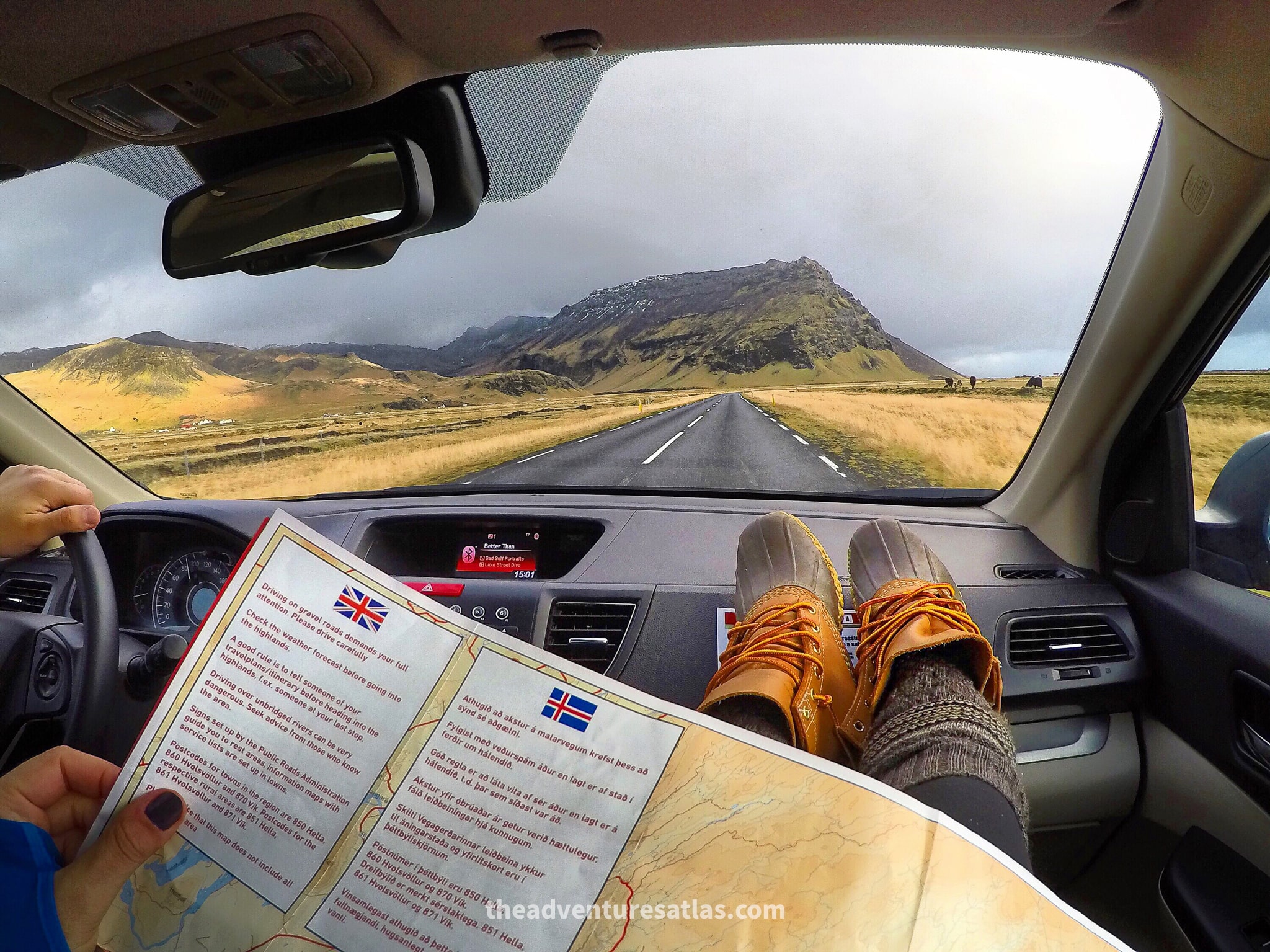
7. The Sock Situation: More Important Than You Think
Quality socks can make or break your Iceland experience. I’ve seen too many travelers suffer through their entire trip because they packed the wrong socks.
Pack several pairs of:
- Merino wool hiking socks – These are incredible. They stay warm even when wet, naturally resist odors (so you can wear them more than once if you have to) and provide cushioning for long hiking days
- Synthetic blend socks as backup options – These dry faster than wool and are usually less expensive. Avoid cotton socks completely because they stay wet forever, have no insulation, and can give you blisters.
Tip: Pack 1-2 more pairs of socks than you think you need. I always bring at least 8 pairs for a week long trip. You’ll want fresh, dry socks every day and sometimes you’ll want to change them during the day if they get wet.
Essential Iceland Summer Accessories: Details That Make A Huge Difference
8. Weather Protection Accessories
These small items can make a huge difference in your comfort level, so don’t forget to include:
-
- Warm beanie or wool hat – Essential for chilly mornings, evenings, and windy days (yes, even in the summer!). Your head loses a lot of heat, so a good hat is crucial. I love that this one is merino wool.
- Waterproof gloves – Yes, you’ll still need these even in the summer, especially if you venture up into the highlands. I recommend lightweight waterproof gloves that you can still use to operate your camera and phone.
- Quality sunglasses – Don’t underestimate how bright Iceland can be!
- Sunscreen with high SPF – UV rays are strong in Iceland and the wind can make you forget you’re getting sunburned.
- Buff or neck gaiter – Super versatile and can be worn as a scarf, headband, or to cover your face depending on conditions.
9. Sleep and Comfort Essentials
- Sleep mask – So many people forget to bring this but you’ll definitely need a mask to sleep with the midnight sun! Even with blackout curtains, some light usually gets through and can bother you if you’re a light sleeper.
- Oversized scarf – Great for added warmth, wind protection. I picked up a wool scarf from a tourist shop the first time I went to Iceland and was so happy to have it double as a blanket during long car rides or flights.
- Earplugs – Helpful for sleeping in hostels or if you’re staying somewhere with thin walls, especially in Reyjkavik.
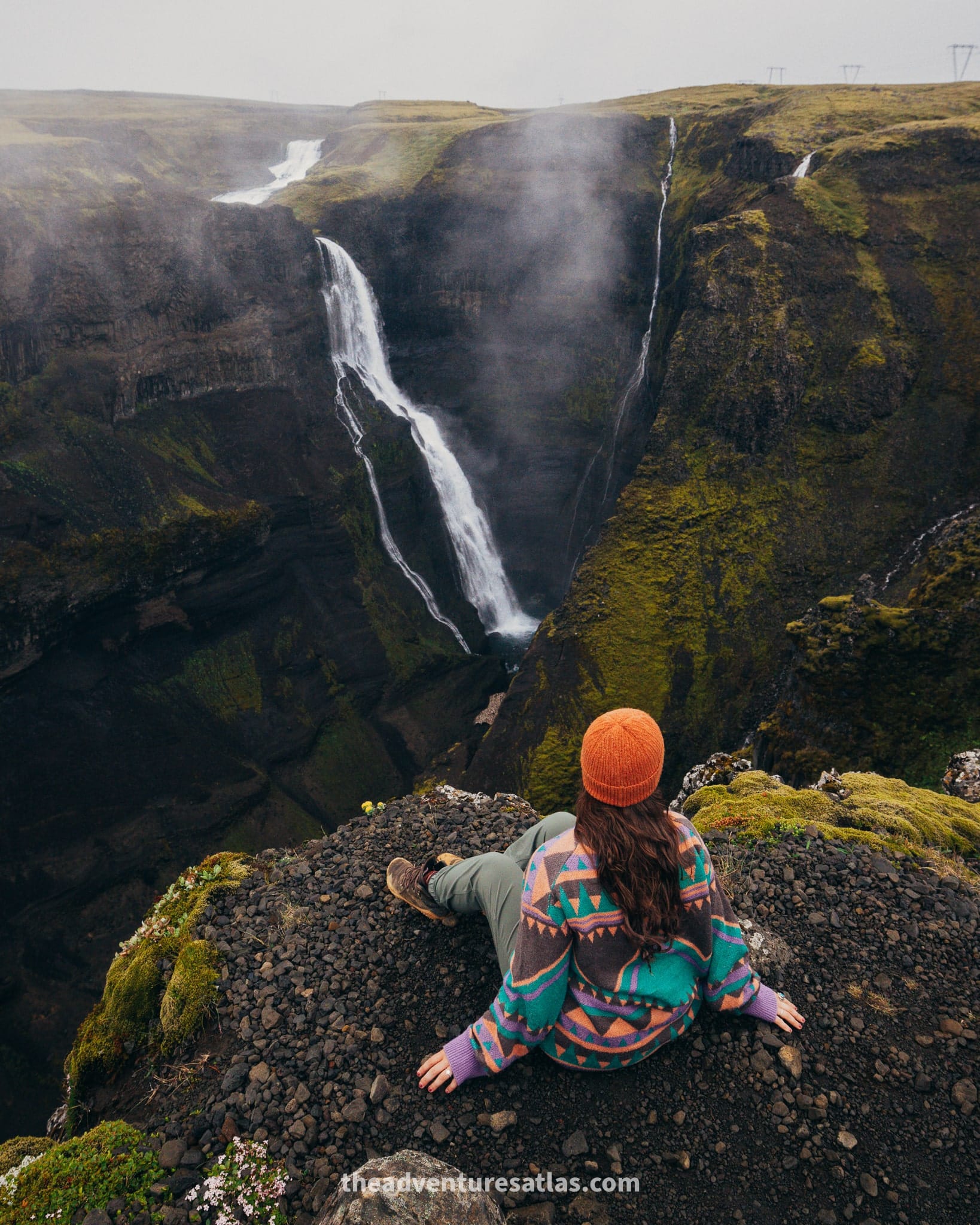
Must-Have Iceland Travel Gear: Electronics and Practical Items
10. Photography and Electronics
Iceland is one of the most photogenic places on earth, so you’ll definitelyyy want to come prepared to capture it:
Camera equipment:
- Camera with extra batteries and memory cards – You’ll take WAY more photos than you expect.
- Waterproof camera case or GoPro – You’ll be happy to have one for waterfall adventures, boat trips, or hot springs.
- Tripod – For long exposure photography of waterfalls or to hold your cell phone (I love this cell phone travel tripod!)
- Lens cleaning cloths – You’ll constantly be cleaning your lenses because of water spray and condensation
If you’re curious what’s in our camera bag for our trips to Iceland, I created a list of everything we use over on Rockporch.
- Power bank – A power bank keeps your devices charged and you connected.
- Car charger – You’ll want this if you’re renting a car (highly recommended). Most cars in Iceland have USB or USB-C plugs, but sometimes you’ll need a cigarette lighter adapter. You can always grab one at any of the convenience stores and gas stations if you forget to bring it.
- Waterproof phone case 0 Protect your phone from rain, waterfall spray, and hot springs.
- Universal travel adapter – Iceland uses Type F plugs with 220V electricity
11. Practical Travel Items
These items will make your daily adventures much more comfortable:
- Waterproof daypack and/or rainfly – for day trips and hikes. You don’t need anything huge, just something to carry water, snacks, extra layers, and camera equipment.
- Reusable water bottle – Iceland’s tap water is some of the best in the world, so there’s no need to buy bottled water. A reusable bottle saves money and reduces waste.
- Binoculars – Great for whale watching and bird watching (puffins!)
- Bug spray – Iceland is the only country without mosquitos, but you’ll want to protect yourself against midges in the summer (especially in the highlands or around waterfalls/lakes)
Personal Care Items for Iceland: What to Bring vs. What to Buy
While you can buy toiletries and personal care items in Iceland, prices are a lot higher than most places (we’re talking 2-3 times what you’d pay at home sometimes). It’s much more budget friendly to just bring whatever you need.
12. Essential Toiletries to Pack
Skincare is especially important in Iceland due to the wind, sun, and dry air:
- Moisturizer and lip balm with SPF – Iceland’s wind and sun can be harsh on exposed skin. I go through lip balm like crazy in Iceland.
- Heavy-duty moisturizer – The air can be quite dry, especially if you’re spending time in geothermal areas
- Gentle face wash – Something that won’t further dry out your skin
- Travel shampoo and conditioner – Check if your accommodation provides these first
Other essential toiletries:
- Prescription medications – Bring more than you need, plus copies of prescriptions
- Contact lenses and solution if you wear them
- Toothbrush, toothpaste, floss
- Deodorant
- Feminine hygiene products – I learned that it’s nearly impossible to find tampons in Iceland, so definitely bring them if you use them
- Any other personal care items you use daily
13. Snacks
Food is expensive in Iceland, especially outside Reykjavik. Here are some snack ideas and things that I pack for my trips to Iceland.
Great snacks for Iceland:
- Energy bars and protein bars
- Pre-packaged nuts and trail mix
- Crackers
- Instant oatmeal packets for breakfast
Just remember: Iceland has strict customs regulations about bringing food, so stick to packaged, processed items and avoid anything fresh.
Important Travel Documents for Iceland
Having the right documentation is crucial for a smooth trip. Here’s what you absolutely need:
14. Essential Documents
- Valid passport – Must be valid for at least 6 months beyond your planned departure date
- Photocopies of important documents – Store these separately from originals in case of loss or theft. Also email a copy to yourself or keep one in Google Drive
- Hotel confirmations and flight details – Print these out and save digital copies
- Driver’s license – You need this if you’re planning to rent a ca (which I highly recommend for exploring Iceland)
- Credit cards – Iceland is almost completely cashless. Credit and debit cards are accepted everywhere, even for small purchases like a cup of coffee or a candy bar. You’ll rarely need cash which is incredibly convenient. However, very few places accept American Express cards, so bring Visa or Mastercard instead.
15. Travel Insurance
Iceland’s adventure activities and remote locations make travel insurance particularly important. Look for coverage that includes:
- Medical emergencies and evacuation
- Adventure activity coverage
- Trip cancellation and interruption
- Lost or stolen baggage
- Rental car coverage
Trust me on this. The peace of mind is worth every penny, especially when you’re hiking on glaciers or exploring remote areas.
Just so you know: Even if your travel insurance covers the car, you’ll still want to opt for the sand/ash/flat tire insurance once you get. I can’t remember a time I road tripped Iceland and didn’t end up with a flat tire or a cracked windshield from rough gravel roads
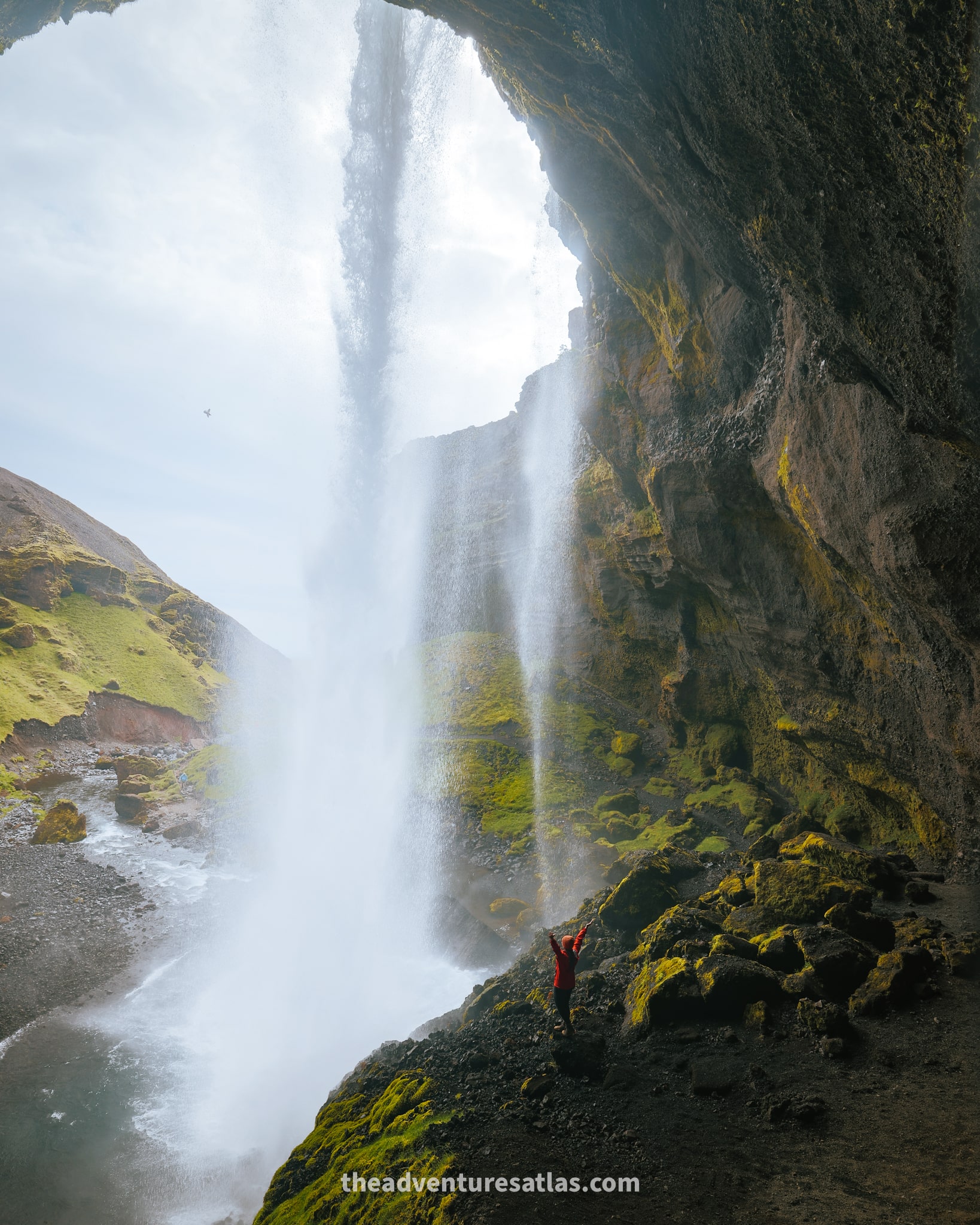
Iceland Packing Tips from Years of Experience
Smart Packing Strategies That Actually Work
Pack light, but pack smart. You need specific gear for summer weather in Iceland, but you don’t need a massive wardrobe. The key is choosing versatile pieces that work well together and can be mixed and matched.
My layering strategy:
- 2-3 base layers that can be mixed and matched
- 1-2 mid-layers for different activity levels
- 1 high-quality waterproof outer shell
- Accessories that serve multiple purposes
Leave room for souvenirs. Iceland has incredible shopping, from authentic lopapeysa (Icelandic wool sweaters) to handmade crafts, unique jewelry made from volcanic materials, and other local products that make amazing mementos. You’ll want space in your luggage for these treasures.
Check airline baggage limits carefully – especially for domestic flights within Iceland, which often have strict weight restrictions. If you’re planning to island-hop or take domestic flights, pack accordingly.
Packing Cube Game-Changer
Use packing cubes to stay organized. With all the layers and gear you’ll need, staying organized is crucial. I use different cubes for base layers, mid-layers, accessories, and electronics. It makes finding what you need so much easier, especially when you’re living out of a suitcase.
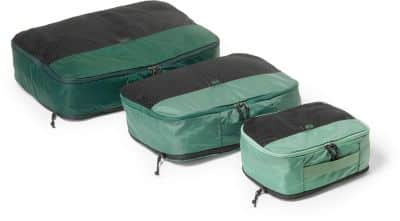
The Iceland Laundry Reality
Most accommodations offer laundry, but they can be expensive. If you’re staying somewhere with laundry facilities, pack a small amount of detergent so you can wash base layers and socks as needed. This lets you pack fewer items overall.
What NOT to Pack for Iceland
Items To Leave at Home
Cotton clothing of any kind – I cannot stress this enough. Cotton stays wet forever, makes you cold when its wet, and will make you miserable. Stick to merino wool and synthetic materials instead.
Heavy winter coats – You’ll be tempted to bring just one heavy coat, but layering is much more effective and versatile for adjusting your temperature as conditions change.
Flip-flops or sandals – You won’t need these unless you specifically want to wear them at hot springs.
Umbrella – Iceland’s wind will destroy any umbrella in minutes. A good rain jacket with a hood is much more effective.
Too many “just in case” items – It’s tempting to pack for every possible scenario, but you’ll end up with an overpacked, heavy suitcase. Stick to versatile, multi-purpose items and pick up anything you forget once you get there.
Prohibited Items: What Iceland Customs Won’t Allow
Iceland has strict customs regulations designed to protect their unique ecosystem. Don’t pack:
- Raw meat, eggs, or dairy products
- Fresh fruits and vegetables
- Plants, seeds, or soil
- Weapons or drugs
- Pet food or animal products (unless properly declared and approved)
- Excessive alcohol or tobacco over the allowed limit
The penalties for bringing prohibited items can be severe, so when in doubt, leave it at home.
What to Expect From Iceland’s Summer Weather (And Why It Matters for Packing)
Iceland’s summer season runs from late May through early September, with June, July, and August being the absolute peak months for both weather and tourism. If you’re visiting during these months, you’re in for a treat – but you need to pack accordingly.
Here’s what makes Iceland’s summer so special and why your packing strategy needs to be spot-on:
The Magic of Midnight Sun
Nearly 24 hours of daylight means you can literally adventure from sunrise to sunrise. I’ve watched the sun set at midnight and rise again at 2 AM. It’s absolutely surreal and means you can pack way more into each day than almost anywhere else on earth.
Temperature Reality Check
Average temperatures hover around 50°F (10°C), which might sound chilly, but it’s actually perfect for hiking and outdoor adventures. On the warmest days, temperatures can reach a comfortable 68-77°F (20-25°C), especially in Reykjavik and along the south coast.
But here’s the catch: temperatures can drop to 43-48°F (6-9°C), particularly in the evenings, early mornings, and in higher elevations. I’ve experienced 30-degree temperature swings in a single day, which is why layering is absolutely essential.
Weather Changes in Minutes
This is the big one that catches most people off guard. There’s actually a saying in Iceland along the lines of “if you don’t like the weather in Iceland, just wait 5 minutes“. And, man, is it true.
I’ve been hiking in bright sunshine only to be caught in a sudden downpour 20 minutes later, followed by giant hail, then back to sunshine before I could even get my rain jacket fully zipped up.
The wind is also a major factor. It can be calm one moment and howling the next, which obviously makes temperatures feel much colder than they actually are.
Seasonal Considerations: Early vs. Late Summer Packing
June: This is early summer in Iceland is weather is still pretty cold and unpredictable. Pack extra warm layers and be prepared for more variable weather.
July – August: This is when temperatures are warmest and the weather is the most stable. You might be able to get away with slightly fewer warm layers, but DON’T skip the rain gear.
September: Late summer/early fall (should season) is kind of a wild card with the weather. Temperatures start getting colder and daylight hours start to shorten. Pack a few extra warm layers for this time of year.
Frequently Asked Questions About Packing for Iceland
Should I bring formal clothes for dining out?
If you’re wondering how to dress for dinner in Reykjavik, the good news is that Iceland is refreshingly casual – even at the most upscale restaurants in the city. Clean jeans, a nice sweater, and comfortable boots are perfectly appropriate for dinner anywhere in the country. The focus is on comfort and practicality rather than formal attire.
That said, if you enjoy dressing up for dinner, a nice dress or button-down shirt with good pants will work great. Just make sure whatever you bring can be layered and is comfortable for walking on potentially uneven surfaces.
How many layers do I really need to wear at once?
If its cold and windy, plan to wear about 3 layers in Iceland in the summer. This includes a base layer, mid-layer, waterproof outer layer, plus accessories like hat and gloves. This system gives you a lot of flexibility without making you feel like the Michelin Man.
The key is being able to add or remove layers quickly as conditions change. I’ve gone from wearing just a base layer in the sunshine to full rain gear in the span of 20 minutes.
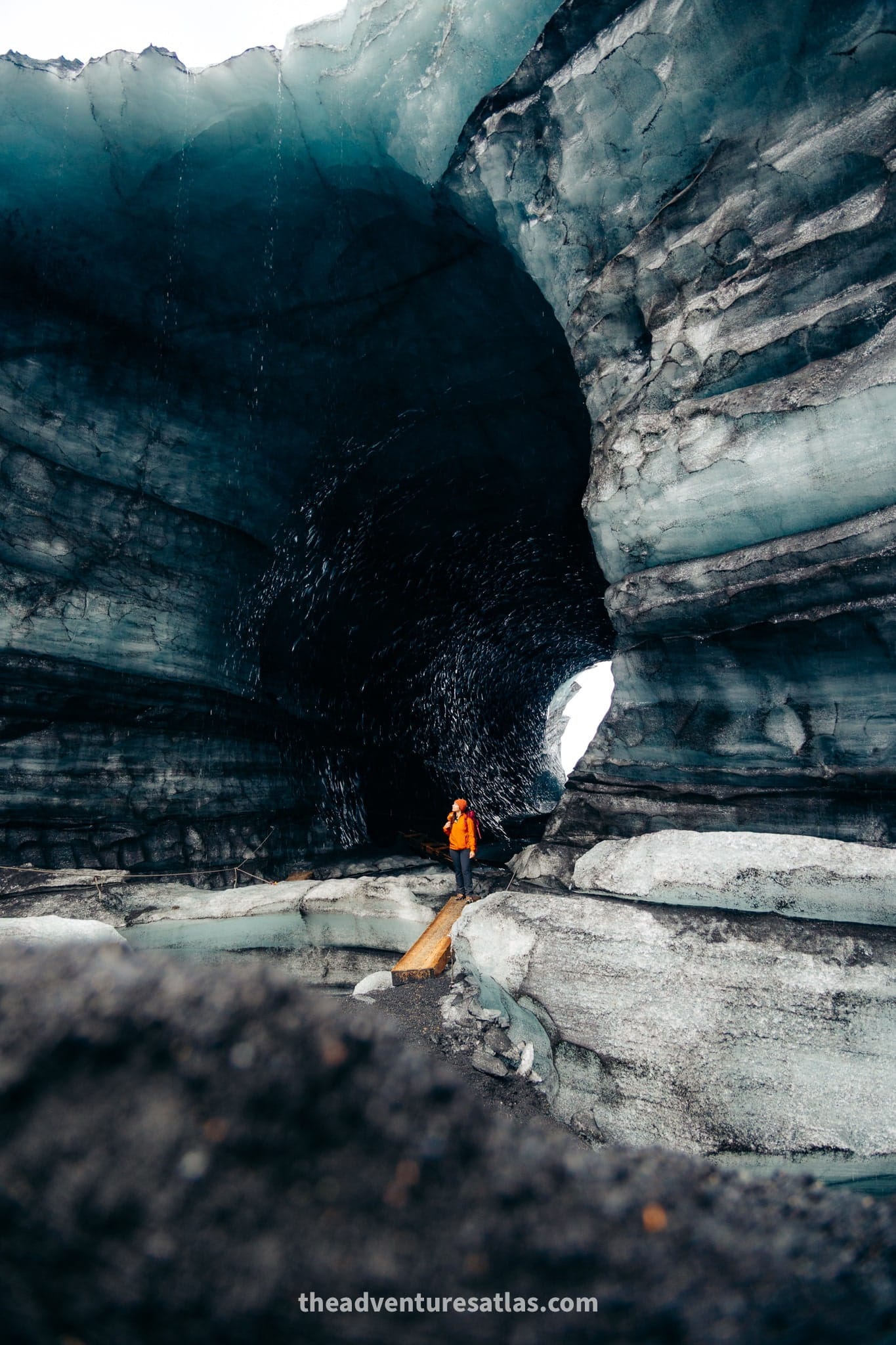
Can I buy gear in Iceland if I forget something important?
Yes, but it’s expensive. Iceland has excellent outdoor gear shops, particularly in Reykjavik, with brands like 66°North (Iceland’s premier outdoor clothing company). However, prices are significantly higher than most other countries, sometimes 2-3 times what you’d pay at home.
It’s much more cost-effective to pack properly from home. That said, if you do need to buy something, the quality is excellent, and you’ll have a great souvenir that will remind you of your trip every time you wear it.
What about laundry during my trip?
Most hotels and guesthouses have on site laundry services. Some accommodations have self-service laundry facilities. If you’re staying somewhere with a kitchen, they often have washing machines you can use.
Pack a small amount of travel detergent so you can hand-wash base layers and socks in your room if needed.
How much should I budget for clothing and gear?
If you’re starting from scratch, expect to spend $500-800 on quality gear (waterproof jacket and pants, hiking boots, base layers, etc.). However, this gear will last for years and can be used for many other adventures.
If you already have some outdoor gear, you might only need to add “Iceland specific items” like extra warm layers or better rain gear.
Remember: Gear can be expensive but investing in quality gear makes your trip infinitely more enjoyable and comfortable. Plus it lasts a lot longer, so you’ll actually save money in the long run.
Ready for Your Iceland Summer Adventure?
Packing for summer in Iceland doesn’t have to be overwhelming when you know what to expect and have a solid plan. The key is to focus on quality layers, reliable waterproof gear, and versatile pieces that work well together.
Remember the golden rule: it’s better to be slightly overprepared than caught off guard by Iceland’s unpredictable weather. With the right gear, you’ll be comfortable and ready to fully enjoy everything this incredible country has to offer.
Have you been to Iceland in summer? What would you add to this packing list based on your experience? Share your tips and stories in the comments below – I’d love to hear from you!
WANT TO SAVE MONEY TRAVELING?
Check out my list of reliable budget-friendly travel resources that are guaranteed to save you the most money, without compromising your experience.
